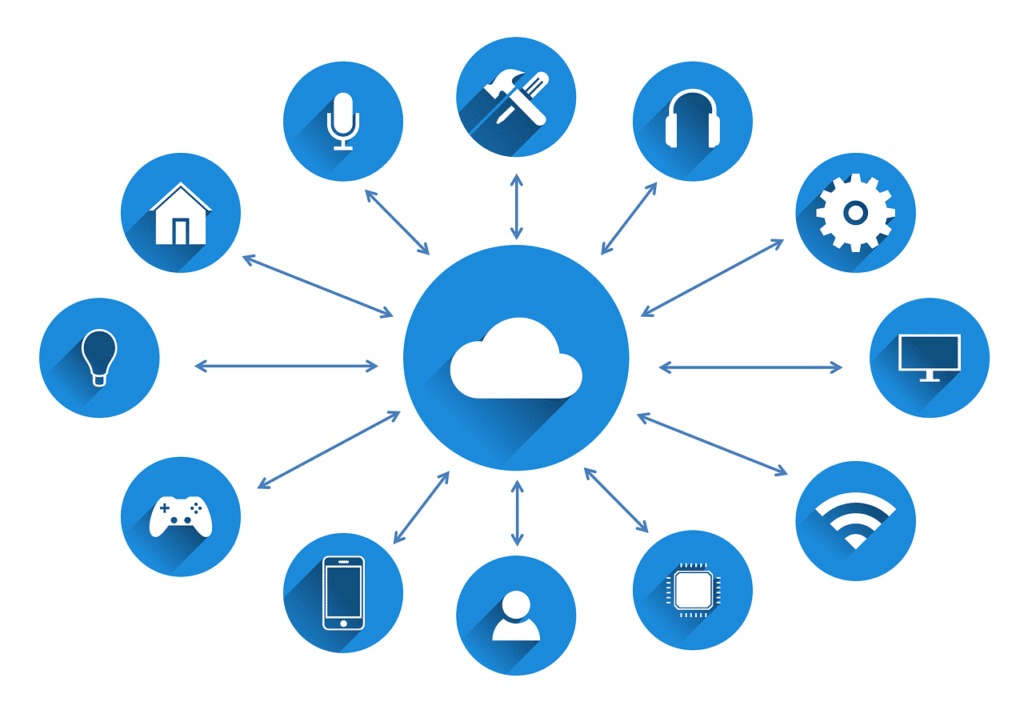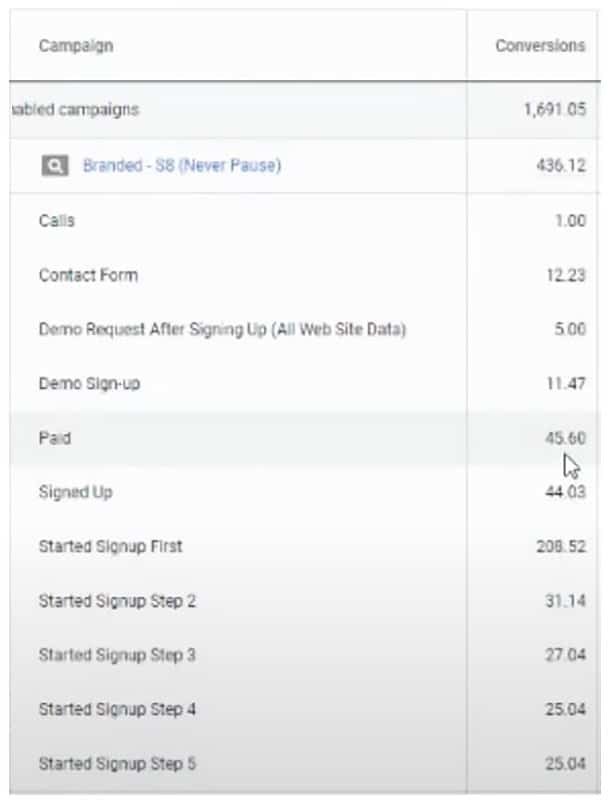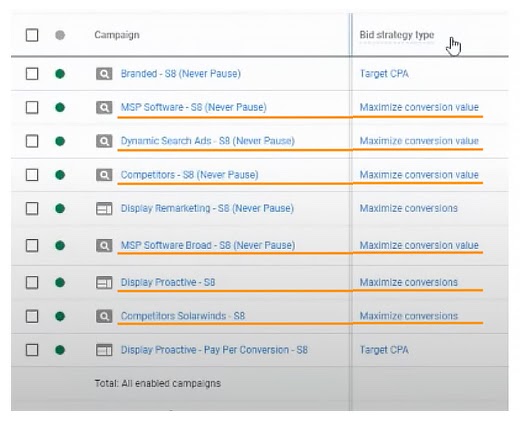This case study is designed to show how you can increase the success of your campaigns and boost sign-up conversions for your software.

The Challenge
After working with SaaS clients over the years, we found the most common problem our clients faced was reducing the number of users who cancel their account during a trial period.
These companies typically rely on different platforms and email automations to track, segment, and send follow-ups.
However, with multiple steps in a funnel, segmenting and tracking potential buyers from non-buyers (and determining who actually buys your products) can be a challenge.
The good news is you don’t need another marketing platform to move users through your funnel. In this case study, we’ll show you how we created simple and robust funnels inside of Google Ads to market our clients’ SaaS products, allowing them to:
- Identify where their most interested buyers came from
- Move more people to the next logical step in the sign-up process
- Increase the users’ desire to purchase the product once the trial ends
The following steps are unique optimization strategies we used with our SaaS clients that increased conversions and reduced their trial’s churn rate.
Let’s dive in.
The Solution
Step 1: Track the “started sign ups first”
The goal of this first step is to find out which audiences are interested first.
These are people who filled out, submitted a form, and signed up for the trial. Do they come from our competitive campaigns, display campaigns, or other campaigns?
Knowing where they signed up helps us get them in the funnel and let other campaigns take over to continue the process.
Next, we added different stages to the sign-up process. As you can see in the image below, the “paid” campaign’s conversion value is higher than the Started Sign Up Steps 2 – 5.

Wondering why there are more paid users than those who signed up? It’s because we created different conversion actions tracked by different campaigns—each separate campaign focuses on a different conversion action.
For example, the campaign “Display Proactive S8” has its conversion action set to “Signed Up” with a monetary value of $0.05.


Why did we add that amount when the person who signed up paid more than $0.50?
That’s what we’ll talk about in Step 2.
Step 2: Assign a value to each sign-up process
SaaS products usually have multiple touch points, multiple sign-up processes, and multiple trials. We assigned different monetary values to each sign-up step so we can maximize the conversion value and bring the user through the next steps.
The image below shows the different steps each user takes in the trial process.

In order to maximize the conversion value and intentionally force the users to move forward, each value we give is worth more than the previous step.
This allows the automated bidding strategy Maximize conversion value to increase the value of each user by bringing them through the next steps and ultimately, get the user to purchase the full version of the product.
In order to maximize the conversion value, we used many different bidding strategies.

The bidding strategy, Maximize conversion value, focuses on making people complete the sign-up process. Here’s how it works:
- Pay one low price to get them started.
- Use a bidding algorithm to bring them through the process.
- Set a target CPA to complete the sign up.
But it doesn’t stop there. To reduce trial cancellations and make sure that the users actually sign up, we want to give them a reward.
Which brings us to the next and final step: Setting specific rules in the funnel.
Step 3: Set up rules based on where they are in the funnel
By setting specific rules based on where a user is in the funnel, you can give unique offers that nudge them to take the next action.
For example, while they’re in the trial process, you can remarket the full feature of your products.
If they’re about to finish the trial but haven’t signed up, you can offer an incentive—like a discount on their first month.
The key here is making each offer unique and only given at a certain stage in the trial process. By doing so, it increases the user’s desire to continue after the trial and makes buying your product a no-brainer.
The Results
Let’s use some specific results from our most recent SaaS client:
- We delivered a 2.5X increase in new trials to their software.
- The number of trial-to-subscribers increased by 50%, which shows the increase in relevancy of the ads to the end-user.
- Their cost per conversion decreased by 40%, from $44.26 down to $28.36.
For our many SaaS clients, this process has reduced their trial’s churn rate and increased their sign-up conversions.
Author
Bryan is the marketing manager at Solutions 8, and has been on digital marketing since 2018. When he’s not working, you’ll find him working out at a local gym, reading personal development books, or playing music at home. He feels weird writing about himself in third person.
 Bryan Caranto
Bryan Caranto










